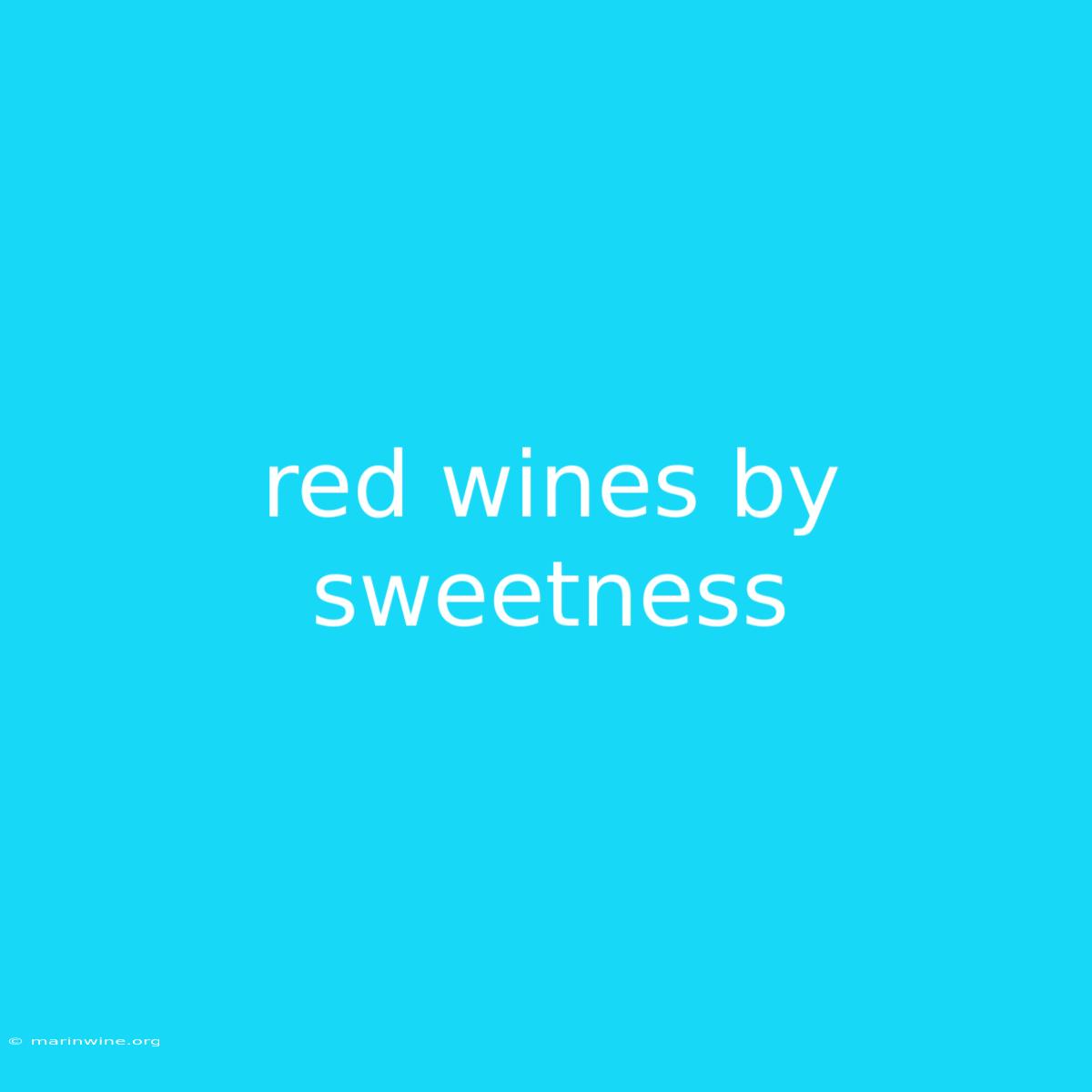Uncorking the Sweet Side of Red Wine: A Guide to Finding Your Perfect Match
Have you ever wondered why some red wines taste sweeter than others? It's not just an illusion; some red wines actually do possess varying levels of sweetness.
Why This Matters: Understanding the sweetness spectrum of red wines unlocks a whole new world of tasting experiences. It can help you discover new favorites, pair wines more confidently with food, and appreciate the nuances of winemaking.
Key Takeaways of Red Wine Sweetness
| Category | Description | Examples |
|---|---|---|
| Dry | No perceptible sweetness; the primary flavors are fruit, tannins, and acidity | Cabernet Sauvignon, Merlot, Pinot Noir, Syrah |
| Off-Dry | A hint of sweetness, often described as "fruity" or "round" | Zinfandel, Sangiovese (some examples), Grenache |
| Sweet | Noticeable sweetness, balanced by acidity and fruit flavors | Port, Lambrusco, Recioto della Valpolicella |
Red Wine Sweetness: A Journey from Dry to Sweet
Dry Red Wines: The Quintessential Taste
Introduction: Dry red wines form the foundation of most wine knowledge. They are characterized by a lack of sweetness, allowing the bold flavors of fruit, tannins, and acidity to shine through.
Key Aspects:
- Tannins: Dry red wines often have tannins, compounds that contribute to a drying sensation in the mouth. They can be high or low depending on the grape, aging, and winemaking techniques.
- Acidity: Acidity provides a refreshing counterpoint to tannins and fruit flavors. It can be subtle or pronounced, impacting the overall balance of the wine.
- Fruit Flavors: Dry reds showcase a spectrum of fruit flavors, from blackberries and cherries to plums and cranberries. These flavors are often complex and layered.
Example: Cabernet Sauvignon is a dry red wine known for its rich tannins, firm acidity, and flavors of blackcurrant, cedar, and tobacco.
Off-Dry Red Wines: A Touch of Fruity Delight
Introduction: Off-dry red wines offer a subtle sweetness that softens the tannins and accentuates the fruit flavors. This sweetness is often described as "residual sugar" and can be derived from various factors, including the grapes used, the climate, and the winemaking process.
Key Aspects:
- Residual Sugar: The small amount of remaining sugar in off-dry wines creates a pleasing balance between sweetness and dryness.
- Fruit-Forward Flavors: These wines emphasize the fruitiness of the grapes, often showcasing notes of red fruit like strawberries and raspberries.
- Lighter Body: They tend to be lighter-bodied than dry reds, making them more approachable and easy to drink.
Example: Zinfandel is a popular off-dry red wine known for its bright fruit flavors, ranging from jammy berries to spiced plums.
Sweet Red Wines: A Luxurious Indulgence
Introduction: Sweet red wines offer a substantial level of sweetness, creating a rich and decadent experience. They are often fortified with brandy to increase alcohol content and preserve the sweetness.
Key Aspects:
- High Sugar Content: These wines have significant residual sugar, adding a noticeable sweetness to the profile.
- Concentrated Flavors: The sweetness often complements intense fruit flavors like fig, dried cherry, and chocolate.
- Complex Aromas: Sweet red wines can develop intricate aromas with aging, adding layers of complexity to the tasting experience.
Example: Port is a classic sweet red wine fortified with brandy, showcasing flavors of dark chocolate, blackberry, and dried fruits.
FAQ: Unlocking the Sweetness Mystery
Introduction: Here are some common questions about red wine sweetness and their answers:
Questions:
- How can I tell if a red wine is sweet? The sweetness level is typically indicated on the label. Look for terms like "dry," "off-dry," "medium-sweet," or "sweet."
- Why are some red wines sweeter than others? Sweetness can vary due to grape varietals, climate conditions, winemaking techniques, and the use of fortification.
- What foods pair well with sweet red wines? Sweet red wines complement desserts, rich cheeses, and spicy dishes.
Summary: The sweetness level in red wines can vary significantly, offering a diverse range of flavor profiles.
Tips for Discovering Sweet Red Wines
Introduction: Here are some tips for expanding your knowledge of sweet red wines:
Tips:
- Explore new grape varietals: Look for red wines made from grapes like Lambrusco, Brachetto, or Recioto della Valpolicella.
- Experiment with different styles: Try sweet wines from various regions, such as Port, Madeira, or Banyuls.
- Consider pairings: Use sweet red wines to enhance your dining experience with dishes like chocolate cake, cheesecake, or spicy curries.
Summary by Red Wine Sweetness
This journey through the sweetness spectrum of red wines has revealed that there's a perfect match for every palate. Whether you prefer the crisp dryness of Cabernet Sauvignon, the subtle sweetness of Zinfandel, or the opulent indulgence of Port, there's a red wine waiting to be discovered.
Closing Message: So next time you're at the wine shop, don't be afraid to explore the world of red wine sweetness. You might just find your new favorite bottle.

